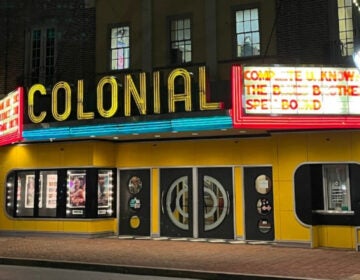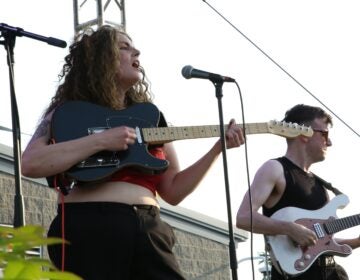Roger Ebert judged films, not filmmakers [Carrie Rickey’s appreciation]
Gene Siskel and Roger Ebert weren’t a comedy team, but they played one on TV. The Laurel and Hardy of movie criticism worked something like this: Ebert, the big one, would construct an eloquent argument on behalf of a new release only to watch Siskel, the skinny one, destroy it with a flick of the thumb.
While many deep-dish critics, including Pauline Kael, disparaged them as “all thumbs,” I admired them for their catholic tastes and for their advocacy of art movies like “Fargo” and documentaries like “Hoop Dreams.” When homo habilis evolved the prehensile thumb, little did he know how eloquently Roger would deploy his.
I met Roger — where else? — at the Cannes Film Festival. It was 1981, my first time there, the year of “Chariots of Fire” and “Man of Iron.” We were both booked at the same hotel, the Splendid, where proprietress, Mme. Cagnat, called him Ro-JAY AY-bear. He invited me to join the contingent of American movie critics at Le Pizza, a modest eatery on the harbor. Where some other colleagues were standoffish and pompous, Roger was friendly and inclusive, and he solicited my thoughts.
Like fellow Chicagoan Vincent Canby, then reviewing film for the New York Times, Roger had that great Middle-American quality of possessing the discrimination of Georges Grand Cru and being able to express it like Joe Sixpack. I loved visiting Roger in his home town, where he took me to Cliff Dwellers, the Louis Sullivan-designed eating club high above Michigan Avenue, and held forth on movies, newsrooms and literature.
When he came to Philadelphia, he favored Bookbinder’s and ordered the fried shrimp. I met him shortly after he stopped drinking, about the time he was dating Oprah Winfrey and advised her to consider syndicating her local TV show. (He would later advise me to negotiate ownership of my work for the Inquirer, a point on which management was non-negotiable.)
What I liked best about our conversations is that he judged movies, not people, which made him unique among the critics of my acquaintance. And he respected the arguments of those who didn’t share his opinions, which was refreshing in our opinionated profession.
What I liked second-best was his professional generosity. He was travelling through Boston when I was working there and saw me pontificate on a local morning show. He promptly called with this advice: “Honey, remember on TV it’s OK to put back in all the clichés you edit out in your writing.”
He was on a book tour here the month before I moved to Philadelphia, and on WMMR he told the interviewer that the Inquirer was about to get one of the best movie critics in America, a bit of hyperbole that eased my transition here.
What running is to athletes watching movies was for Roger: It gave him an endorphin rush. At Cannes he would see as many as seven movies a day — that’s 15 hours in the dark — and whether delighted or underwhelmed or disgusted, he was engaged. I remember sitting next to him at Cannes in 1987 at “Surf Nazis Must Die,” I wanted to leave, but he was digging it so much that it was contagious.
On May 14, 1998, at Cannes I walked out of a screening with him and his lovely wife, Chaz, as a phalanx of reporters thrust microphones in his face. Frank Sinatra had died, and the press wanted a reaction from America’s moviegoer in chief. I was awed by how Roger ad libbed that when the book of 20th century entertainment is written, Sinatra will have a chapter as the best singer of his era. Roger said it with grace — avoiding the sticky question of Sinatra’s streaky acting career. What an effing pro.
And he said it having just learned from Chaz that Gene Siskel was terminally ill. It was the only time I saw him lose control. There was bad news from Chicago, he said. Gene had a bad prognosis, he said. Please don’t share this, he added.
I learned a lot about movies from Roger. More important, I learned from him how to respond when Death comes knocking. Roger greeted Death with the full force of his intelligence and wit, as if he were a prospective debating partner. He wrote eloquently of the salivary cancer that deprived him of his speech. He wrote self-critically of the experimental therapies he submitted to in the hope that he could get back on TV sooner.
—
I last see Roger in 2010 at his Chicago townhouse, full of English illustrations and African art. He is minus his tongue and part of his jaw. Reconstructive surgery leaves him resembling the title character in “The Man Who Laughs,” the figure whose face has been mutilated into a ghoulish clown’s smile. On Roger the expression doesn’t look ghoulish. It looks like gratitude. Roger is happylto be alive and productive.
Over the next few hours — I talk, he mimes or scribbles his thoughts on a note pad — we have a lively conversation that touches on President Obama, the city tours on the Chicago River and the films of Yasujiro Ozu. When we go to his private screening room, he gives me a DVD of Ozu’s “Floating Weeds,” a poetic story of disappointment and reconciliation set among travelling players. This is the film, Roger wrote, that he turns to “for reassurance and consolation.”
And now, so will I.
—
Follow Carrie Rickey at carrierickey.com.
WHYY is your source for fact-based, in-depth journalism and information. As a nonprofit organization, we rely on financial support from readers like you. Please give today.




